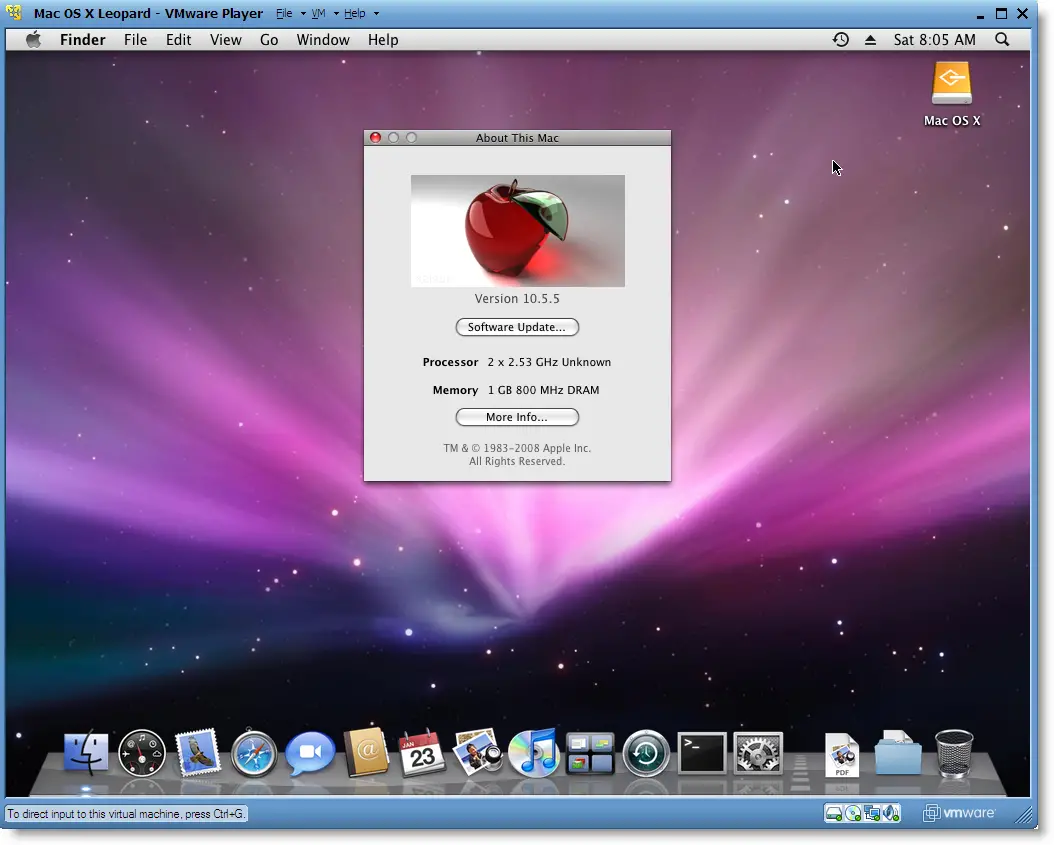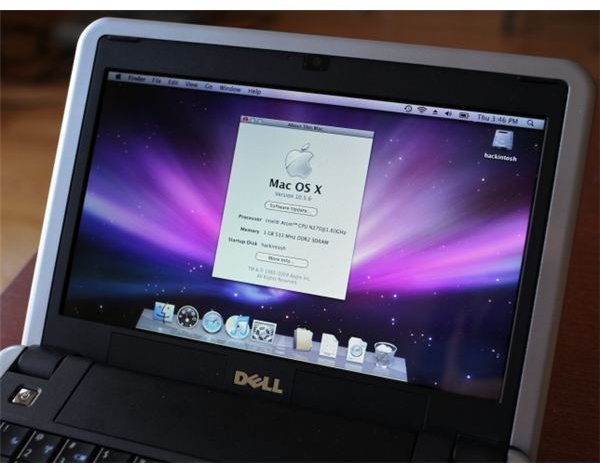Mac Os For Pc
What you need to install Windows 10 on Mac
- MacBook introduced in 2015 or later
- MacBook Air introduced in 2012 or later
- MacBook Pro introduced in 2012 or later
- Mac mini introduced in 2012 or later
If your PC has integrated and discrete graphics cards, remove the discrete one. Choose the hard drive you want to install macOS on and click the Erase tab. Make sure Mac OS Extended (Journaled. Install Mac OS X Yosemite on VMware, and it is the 11th major release of Mac, Apple company. Therefore, this version of Mac OS X Yosemite is 10.10 and it was the old version of macOS operating system among the other operating systems. In simple terms, Hackintosh is the name given to the action of installing Mac OS on PC. So instead of installing Windows, you would install Mac. Whilst running Mac OS on a traditional PC is not supported by creators Apple, with the proper hardware and user knowledge, it can be done. Oct 14, 2019 Check About This Mac. From the Apple () menu in the corner of your screen, choose About This Mac. The version of your operating system appears beneath “macOS” or “OS X” in the window that opens. If you need to know the build, click the version. This example shows macOS High Sierra version 10.13, build 17A365: Below are the versions and builds. How to Install macOS on a Windows PC. This wikiHow teaches you how to run macOS High Sierra on your Windows computer. To do this, you will need to download an app called Unibeast. You will also need access to a Mac, along with a supported.
Mac Os For Pc Iso
- iMac introduced in 2012 or later1
- iMac Pro (all models)
- Mac Pro introduced in 2013
The latest macOS updates, which can include updates to Boot Camp Assistant. You will use Boot Camp Assistant to install Windows 10.
64GB or more free storage space on your Mac startup disk:
- You can have as little as 64GB of free storage space, but at least 128GB of free storage space provides the best experience. Automatic Windows updates require that much space or more.
- If your Mac has 128GB of memory (RAM) or more, the Windows installer needs at least as much free storage space as your Mac has memory. For example, if your Mac has 256GB of memory, your startup disk must have at least 256GB of free storage space for Windows.
An external USB flash drive with a storage capacity of 16GB or more, unless you're using a Mac that doesn't need a flash drive to install Windows.
Located on the left is a big blue circle with the name of your external drive together with its volume size. If you select the one below it, the Partition option will be greyed out and become unclickable.Step 2: Add partitions and allocate volume for each one.After clicking “Partition”, you’ll see this window. 
A 64-bit version of Windows 10 Home or Windows 10 Pro on a disk image (ISO) or other installation media:
- If installing Windows on your Mac for the first time, use a full version of Windows, not an upgrade.
- If your copy of Windows came on a USB flash drive, or you have a Windows product key and no installation disc, download a Windows 10 disk image from Microsoft.
- If your copy of Windows came on a DVD, you might need to create a disk image of that DVD.

How to install Windows 10 on Mac
To install Windows, use Boot Camp Assistant. It's in the Utilities folder of your Applications folder.
1. Use Boot Camp Assistant to create a Windows partition
Open Boot Camp Assistant and follow the onscreen instructions:
- If you're asked to insert a USB drive, plug your USB flash drive into your Mac. Boot Camp Assistant will use it to create a bootable USB drive for Windows installation.
- When Boot Camp Assistant asks you to set the size of the Windows partition, remember the minimum storage-space requirements in the previous section. Set a partition size that meets your needs, because you can't change its size later.
2. Format the Windows (BOOTCAMP) partition
When Boot Camp Assistant finishes, your Mac restarts to the Windows installer. If the installer asks where to install Windows, select the BOOTCAMP partition and click Format. In most cases, the installer selects and formats the BOOTCAMP partition automatically.
3. Install Windows
Mac Os Mojave For Pc
Unplug any external devices, such as additional displays and drives, that aren't necessary during installation. Then click Next and follow the onscreen instructions to begin installing Windows.
4. Use the Boot Camp installer in Windows
After Windows installation completes, your Mac starts up in Windows and opens a ”Welcome to the Boot Camp installer” window. Follow the onscreen instructions to install Boot Camp, including Windows support software (drivers). You will be asked to restart when done.
If the Boot Camp installer doesn't open automatically, your final step should be to open the Boot Camp installer manually and use it to complete installation.
How to switch between Windows and macOS
Restart, then press and hold the Option (or Alt) ⌥ key during startup to switch between Windows and macOS.
Learn more
If you have one of these Mac models using OS X El Capitan 10.11 or later, you don't need a USB flash drive to install Windows:
- MacBook introduced in 2015 or later
- MacBook Air introduced in 2015 or later2
- MacBook Pro introduced in 2015 or later2
Mac Os For Pc Windows
- iMac introduced in 2015 or later
- iMac Pro (all models)
- Mac Pro introduced in late 2013

Run Mac Os On Windows 10
For more information about using Windows on your Mac, open Boot Camp Assistant and click the Open Boot Camp Help button.
1. If you're installing Windows and macOS Mojave on an iMac (27-inch, Late 2012), iMac (27-inch, Late 2013), or iMac (Retina 5K, 27-inch, Late 2014) and your Mac is configured with a 3TB hard drive, learn about an alert you might see during installation.
2. These Mac models were offered with 128GB hard drives as an option. Apple recommends 256GB or larger hard drives so that you can create a Boot Camp partition of at least 128GB.